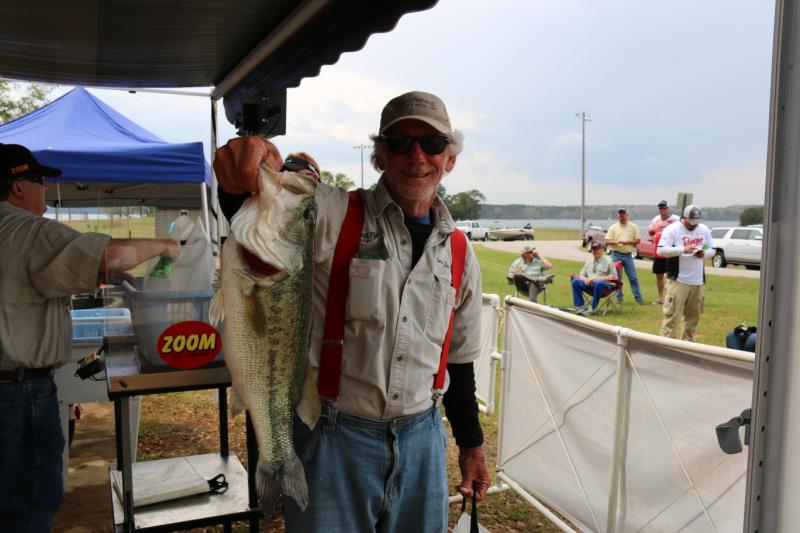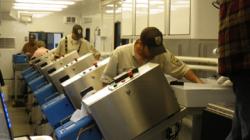I went over to Whitetail Campground on Thursday afternoon, put the boat in the water and set up my van camper. The campground is straight across the lake from Pyne Park, the tournament launch site and it is very convenient to leave the boat in the water and go over each morning to the blast off, avoiding the confusion and mess of 100 boats trying to launch.
Friday morning I got up and started trying to figure out where the bass were and what they would hit. When I saw the water temperature was 61 degrees I tried a topwater plug and caught a keeper spotted bass so I fished it for an hour without another bite. After switching to a jig and a Carolina rigged lizard I started catching keeper spots on every gravel point I fished, but I knew they would not win the tournament.
I did catch a three pound largemouth on Saturday morning out of some brush on a point, the size fish that would make a difference in the tournament. But after trying that kind of cover for the rest of the day all I caught were more small spots, although I was throwing big jig and pig.
Sunday morning Jordan McDonald and Jennifer Spell went out with me to practice. Although they were both fishing with the Flint River team and I was on the Sportsman Club team we were working together. The first place I stopped, another rocky point with some brush, I hooked and landed a six pound largemouth and got real excited! Maybe that pattern would work.
About noon we went into a small creek up the river. Jordan had talked to a friend and was told running a square bill crankbait by wood cover worked, and the first stick he tried he landed a 3.5 pound largemouth. The next stick I landed a 2.5 pound largemouth so we were excited.
As luck would have it that afternoon at the drawing, Jordan and I were paired for Monday. The computer won’t pair two fishermen from the same club, but since we were on different clubs we got to fish together. We had a plan!
Monday morning we took off to the point where I had caught the three pounder since it was close. Although there were no largemouth there, spots were feeding and we stayed for almost two hours until we both had four keepers. The rain made us stay longer than planned on those small fish but we didn’t want to run in the pouring rain.
On the point where I had caught the six pounder we caught several spots, but no largemouth. So we headed to the creek up the river, hoping to cull all those little spots. But again nothing but small spots hit there. A little after noon we started fishing pockets in Yellowjacket Creek, the pattern Jordan’s friend told him about, and Jordan landed a 4.5 pounder, but I caught nothing but small fish.
At weigh-in Jordan had a little over 10 pounds and my five weighed an even seven pounds. Jordan was in a good position but I knew I was in trouble. The fisherman weighing in behind me had five weighing 22 pounds! And some others had 14 to 16 pounds.
The second day even the spots quit hitting on the first two places my partner from Savannah and I fished so we went to the creek up the river. We started catching some decent largemouth as well as spots there and I even landed a 5.65 pound largemouth on a Carolina rig. We stayed there until we had to go in.
I had five at just over 10 pounds and my partner had just under 10 pounds to go with the 10 pounds he had caught the day before. My big fish ended up being the seventh biggest in the tournament.
Jordan finished in 16th place out of almost 200 fishermen and I came in 32nd. Mickey McHenry on the Flint River team placed 15th. The Sportsman Club team was 15th out of 33 teams and the Flint River Team was 16th.
Although I was dead tired after all that fishing I am already looking forward to the other Federation Top Six at Hartwell in October and this Federation tournament at Eufaula next April!


